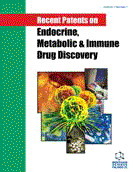Abstract
The C-X-C chemokine receptor (CXCR)3 and its chemokines (CXCL9, CXCL10, CXCL11) are involved in the pathogenesis of autoimmune thyroiditis (AT), Graves’ disease (GD) and Graves’ Ophthalmopathy (GO). Under the influence of interferon(IFN)γ, the IFNγ-induced protein 10 (IP-10/CXCL10) is secreted by thyrocytes, orbital fibroblasts and preadipocytes. In tissue, Th1 lymphocytes are recruited; hence IFNγ is enhanced, which stimulates CXCL10 secretion reiterating the autoimmune process. The presence of elevated levels of CXCL10 in peripheral liquids is considered a marker of Th1 orientated immune response. High levels of circulating CXCL10 (sCXCL10) have been shown in patients with AT, overall with hypothyroidism. In GD and GO patients high sCXCL10 have been shown particularly in the active disease. A modulatory role of peroxisome proliferator-activated receptor (PPAR)γ or - α agonists on CXCR3 chemokines in AT, GD and GO and the immuno-modulatory effect of methimazole on CXCR3 chemokines in GD have been shown. Further studies are ongoing to explore the use of new molecules that act as antagonists of CXCR3, or block CXCL10, in autoimmune disorders, and many interesting patents have been recently applied.
Keywords: CXCL9, CXCL10, CXCL11, CXCR3, Graves’ disease, thyroid autoimmunity, thyroid autoantibodies, thyroiditis.
 38
38





















